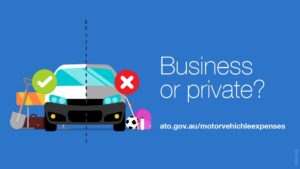Claiming Motor Vehicle Expenses: Cents per Km or Logbooks?
When it comes to claiming motor vehicle expenses for tax deductions, there are two methods – the cents per KM method or the logbook method.
Under the cents per KM method you can claim up to 5,000km at 85c per KM (for 2023-2024) with the only required evidence showing how you worked out your business km’s.
Under the logbook method, you maintain a logbook for a representative 12 continuous week period of all your travel. A business percentage is then determined based on this logbook and you can use this business percentage to claim a percentage of all motor vehicle expenses, such as fuel, registration, insurance, maintenance etc. Records must be kept for all expenses.
A logbook can be used for a maximum of 5 years, if your usage remains the same (ie if you moved house or changed jobs/roles, you will likely need a new logbook.)
Without a valid logbook, you must use the cents per KM method and you cannot estimate or claim other motor vehicle related expenses.
Logbook options
options
Paper Hard Copy Logbooks
The traditional paper hard copy logbooks require users to manually record every journey, including the starting and ending odometer readings, dates, distances travelled, and the purpose of the trip. While this method can be cost-effective, it can be time-consuming and prone to human errors. However, for individuals who prefer a tangible and simple approach, paper logbooks can be a suitable option.
ATO’s Free My Deductions App
The ATO’s My Deductions app offers a digital solution for maintaining vehicle usage records. Users can effortlessly log their trips, record odometer readings, and categorise each journey as business, personal, or other. The app automatically calculates the percentage of business use, making it easier to claim motor vehicle expenses during tax time. As a free and user-friendly option, the My Deductions app is a popular choice for individuals looking for a streamlined solution.
Paid Logbook Apps like Driversnote
Paid logbook apps, such as Driversnote, offer advanced features and a more comprehensive approach to vehicle expense tracking. With GPS tracking, automatic trip classification, and cloud storage, these apps reduce manual data entry and ensure accurate reporting. Paid apps often provide additional functionalities like exporting reports directly to tax agents, making the tax-filing process even smoother. For those seeking an automated solution, investing in a paid logbook app like Driversnote can be a worthwhile option.
Conclusion
Choosing between the cents per KM method and the logbook method largely depends on the extent of business-related vehicle use and the potential for higher deductions. While the cents per KM method offers simplicity, the logbook method provides more significant deductions for those with substantial business travel. Regardless of the method chosen, keeping accurate records is crucial for claiming motor vehicle expenses and maximising deductions while complying with ATO requirements.

